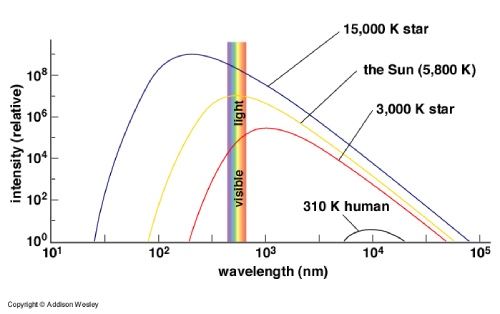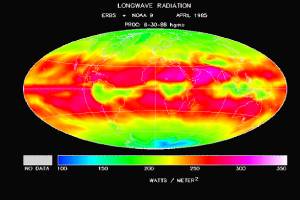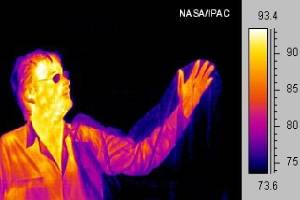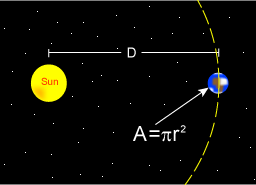A black body is an idealized physical body that absorbs all incident electromagnetic radiation, regardless of frequency or angle of incidence. One way to think about black body radiation is that it is the emission from a hypothetical “perfect” radiator at a constant temperature. The radiation has a characteristic spectrum and intensity that depends on the body’s temperature, shape, and other characteristics.
The study of these properties led to one of the most important discoveries in modern physics: Planck’s law, which states that the spectral radiance (power per unit area) from a black body at any given wavelength is directly proportional to the fourth power of its absolute temperature. This article teaches about what black body radiation is. Its History and the Application of black body radiation.
Contents
What is Black Body Radiation?
“Blackbody radiation,” also known as “cavity radiation,” refers to an object or system that absorbs all incident radiation and re-radiates energy that is unique to this radiating system and is unaffected by the type of radiation it receives. A standing wave or resonant mode of the radiating cavity is considered the source of the radiated energy.
In other words, Blackbody radiation is the thermal electromagnetic radiation released by a black body when it is in thermodynamic equilibrium with its environment (an idealized opaque, non-reflective body). It has a defined spectrum of wavelengths that are inversely related to intensity and are only dependent on the body’s temperature, considered uniform and constant for calculations and theory.
Electromagnetic radiation is emitted by all objects with a temperature greater than absolute zero (0 K, -273.15 oC). A blackbody is a hypothetical or model body that absorbs all incident radiation and does not reflect or emit any. It is a theoretical object that is a “perfect” radiation absorber and emitter across all wavelengths. A blackbody’s spectral distribution of thermal energy radiated (i.e., the pattern of the intensity of the radiation over a range of wavelengths or frequencies) is solely determined by its temperature.
Spectral distribution of black body radiation
A black body is a hypothetical object that emits radiation at all frequencies with a spectral distribution that is solely dependent on temperature and not on the composition of the item. Black-body radiation is the name given to the radiation that such an object emits. An experimental pinhole in a hollow cavity kept at a fixed temperature can produce black-body radiation.
History of Black Body Radiation
blackbody radiation is a type of thermal radiation; its History begins with the study of thermal radiation. William Herschel, an astronomer, conducted an experiment in which he used a prism to create a spectrum of light and measured the temperature at various points along the range 1800. He discovered that temperature varies across the field, implying that thermal radiation and light waves are the same. He also found that the temperature was highest below the red section of the content, where no visible light was present. Infrared light, the principal channel of thermal radiation for most bodies on Earth, corresponds to these wavelengths with the highest temperatures.
Assuming that a human is a blackbody, the wavelength with the highest radiation intensity is around 104 nm(nanometer), which is in the infrared spectrum. Objects below 3000 K (Kelvin) in temperature will similarly have their highest intensity in the infrared section, as indicated in the image below the spectral distribution of black body radiation.
Balfour Stewart was the next pioneer in the study of blackbody radiation, comparing the strength of radiation from lamp-black surfaces to that of non-black sources at the same temperature. He discovered that the lamp-black characters absorbed and produced the most intense radiation from themselves. The first point is self-evident due to how light waves carry thermal radiation. Because black surfaces absorb all light, they absorb as much thermal radiation as possible.
A year later, a German scientist named Gustav Kirchhoff independently discovered Balfour’s results and improved them with his thermal emission theory. According to his hypothesis, a surface in thermal equilibrium has an equal capability for thermal radiation absorption and emission. As a result, a black mass, which perfectly absorbs all thermal radiation, will emit the most thermal energy conceivably. Furthermore, his hypothesis demonstrated that the emission-to-absorption ratio is a temperature function with no other variables. The relationship between absorption and emission was well understood before Kirchhoff’s theory. Still, he thoroughly demonstrated and elaborated on it, coining the term “blackbody” to describe a body that absorbs all thermal radiation. Of course, this is an idealization that does not exist in nature, but many bodies are incredibly close to being black bodies and can be described as such without any loss of realism.
In 1900, Max Planck discovered the function that regulates the ratio of a black body’s emission and absorption. His formula showed that radiation increases universally for all wavelengths when the temperature rises, whereas the wavelength corresponding to the maximum radiation decreases. As a result, the highest radiation from highly hot objects occurs within the visible light spectrum, and at extremely high temperatures, even in the ultraviolet case.
Application of black body radiation
Mainly used Applications of black body radiation are:
- lighting
- heating
- security
- thermal imaging
- testing and measuring
- Cosmology
- The Effective temperature of Earth
- Temperature relation between a planet and its star
- Human-body emission
The Planck Law of Radiation can be used to determine the intensity of energy at any temperature and wavelength. For calibrating and testing radiation thermometers, a blackbody radiation source with a known temperature or one that can be measured is commonly employed. Below are some images representing applications of black body radiation.
Conclusion
In conclusion, it can be observed that classical mechanics failed to explain a naturally occurring phenomenon such as blackbody radiation. In the case of blackbody radiation, quantum mechanics serves as a link between experimental observation and theoretical prediction. The concept of energy in lumps or packets was novel in the early twentieth century. It has completely transformed our understanding of how the world functions on a microscopic scale. Quantum physics, in comparison to the larger scale of things, forces one to consider the workings of the world from a new perspective (i.e., non-continuous energy), much like Copernicus’ suggestion that the Earth revolves around the sun, which inevitably changed the world perception held by the conventional scientists at that time.
Sources
- October 1900: Planck’s Formula for Black Body Radiation. (n.d.). Aps.Org. Retrieved February 26, 2022
- Selection and applications of a black body radiation source | Ci Systems. (n.d.). Ci-Systems.Com. Retrieved February 26, 2022
- Blackbody Radiation – Tutor Me Now. (n.d.). Tutor Me Now. Retrieved February 26, 2022, from http://www.tutormenow.ca/resources/blackbody-radiation
FACT CHECK: We strive for accuracy and fairness. But if you see something that doesn’t look right, please Contact us.
DISCLOSURE: This Article may contain affiliate links and Sponsored ads, to know more please read our Privacy Policy.
Stay Updated: Follow our WhatsApp Channel and Telegram Channel.
















